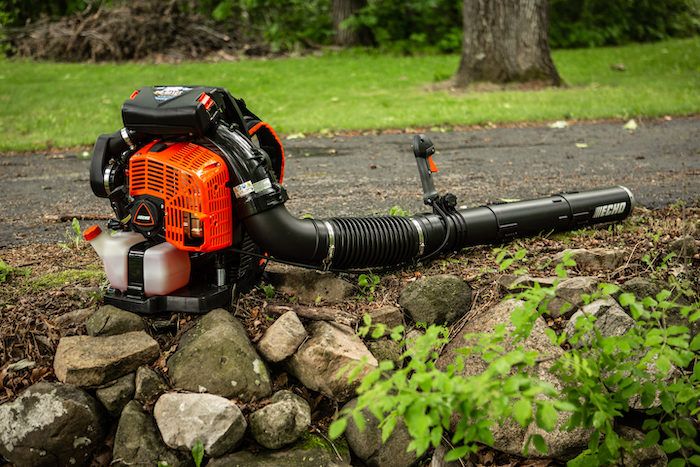A backpack leaf blower is a significant investment for homeowners with large yards and an indispensable tool for landscaping professionals. To ensure its longevity, optimal performance, and safe operation, regular maintenance is absolutely crucial. Neglecting routine care can lead to costly repairs, reduced efficiency, and premature wear. By following a consistent maintenance schedule, you can keep your backpack leaf blower running smoothly season after season.
Why Regular Maintenance Matters
Proper maintenance extends the lifespan of your blower, ensures it starts reliably, and performs at its peak. It also helps prevent minor issues from escalating into major, expensive problems. A well-maintained blower is a safer blower, reducing the risk of breakdowns during operation.
Essential Maintenance Tasks
The specific maintenance requirements will vary slightly between gas-powered and battery-powered models, but many core principles apply to both.
1. Cleaning (After Each Use)
- Exterior: Wipe down the exterior of the blower to remove dirt, dust, and sap.
- Air Intake Vents & Cooling Fins: Crucially, clear any debris from the air intake vents and cooling fins around the engine/motor. Blocked fins can lead to overheating, especially in gas models. Use a brush or compressed air.
- Blower Tube/Nozzle: Remove any leaves, twigs, or other debris that might be lodged inside the blower tube or nozzle.
2. Air Filter Maintenance (Regularly, as needed)
- Gas Blowers: The air filter prevents dirt and debris from entering the engine. Check it frequently (e.g., every 5-10 hours of use or before each major cleanup). If it’s dirty, clean it according to the manufacturer’s instructions (some are washable, others can be blown clean with compressed air). Replace it if it’s torn, heavily soiled, or cannot be cleaned effectively. A clogged air filter can lead to reduced power and hard starting.
- Battery Blowers: While less critical than in gas models, some battery blowers may have filters or screens that should be kept clean to ensure optimal airflow to the motor.
3. Spark Plug Inspection and Replacement (Gas Blowers – Annually or as needed)
- Inspection: Remove the spark plug and inspect it for fouling (carbon buildup), discoloration, or damage. A light brown color indicates good combustion; black deposits suggest a rich fuel mixture or oil burning.
- Cleaning/Gapping: Clean any deposits with a wire brush. Check the gap with a feeler gauge and adjust if necessary (refer to your manual for the correct gap).
- Replacement: Replace the spark plug annually or if it shows signs of heavy wear, cracking, or if cleaning doesn’t resolve starting issues.
4. Fuel System Care (Gas Blowers – Before Storage)
- Fuel Filter: The fuel filter inside the fuel tank can become clogged. Replace it annually or if you notice fuel delivery issues.
- Fuel Stabilizer: For long-term storage (more than a month), always use a fuel stabilizer in fresh fuel and run the engine for a few minutes to circulate it. Alternatively, drain the fuel tank and run the carburetor dry to prevent gumming.
- Fresh Fuel: Always use fresh, properly mixed fuel (for 2-stroke engines). Old or stale fuel is a common cause of performance problems.
5. Battery and Charger Care (Battery Blowers – Ongoing)
- Battery Storage: Store batteries in a cool, dry place, ideally at a partial charge (around 50%) for long-term storage, as recommended by the manufacturer. Avoid extreme temperatures.
- Charger: Keep the charger clean and ensure it’s used in a well-ventilated area.
6. Inspecting the Blower Tube and Nozzle (Regularly)
- Check for cracks, damage, or blockages in the blower tube and nozzle. Ensure they are securely attached.
7. Harness and Straps (Regularly)
- Inspect the harness, shoulder straps, and hip belt for wear, tears, or damage. Ensure all buckles and adjusters are functioning correctly for comfortable and safe operation. Clean off any dirt or sweat.
8. General Fasteners and Connections (Periodically)
- Check all screws, bolts, and connections to ensure they are tight. Vibrations can cause fasteners to loosen over time.
Conclusion
Consistent maintenance is the key to maximizing the life and performance of your backpack leaf blower. By dedicating a small amount of time to cleaning, inspecting, and performing routine tasks like air filter and spark plug maintenance, you can prevent most common problems and ensure your blower is always ready to tackle the toughest yard cleanup jobs. Always consult your owner’s manual for specific maintenance guidelines and recommended service intervals for your model.


